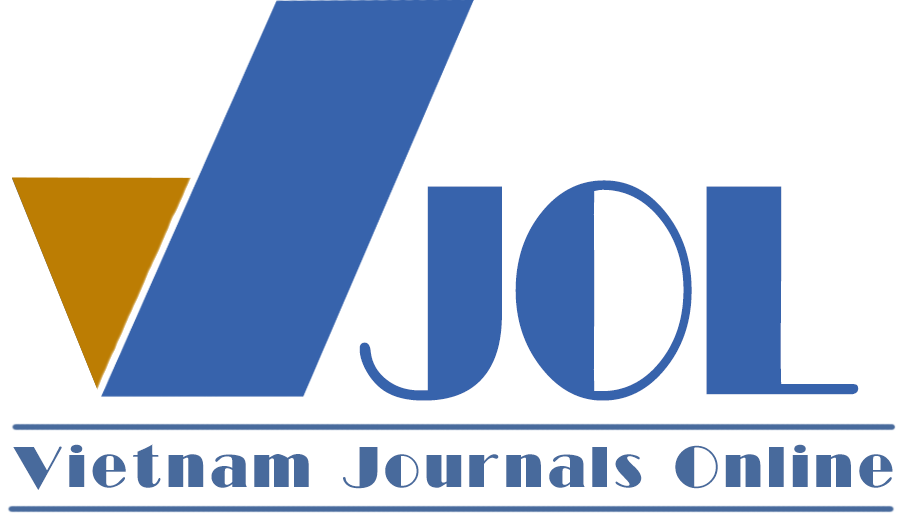Phân công và phối hợp giữa Quốc hội và Tòa án nhân dân tối cao trong việc thực hiện quyền tư pháp tại Việt Nam
DOI:
https://doi.org/10.70236/tckhplvn.274Từ khóa:
quyền lực nhà nước, Quốc hội, Tòa án nhân dân tối cao, quyền tư phápTóm tắt
Bài viết phân tích sự thống nhất, phân công và phối hợp giữa lập pháp và tư pháp trong việc thực hiện quyền tư pháp tại Việt Nam hiện nay. Bài viết cũng đưa ra các kiến nghị nhằm hoàn thiện mối quan hệ này theo hướng phù hợp với công cuộc xây dựng nhà nước pháp quyền xã hội chủ nghĩa Việt Nam trong thời gian tới.
Tải xuống
Tài liệu tham khảo
[1] Augustine, On the free choice of the will, on grace and free choice, and other writings, Cambridge University Press, 2010
[2] William Baude, Stephen E. Sachs, “The law of interpretation”, Harvard Law Review, Vol. 130(4), 2017
[3] Nguyễn Đăng Dung, Thể chế Tư pháp trong Nhà nước pháp quyền, Nxb Tư pháp, 2005 [trans: Nguyen Dang Dung, Judicial Institutions in the Rule of Law State, Justice Publishing House, 2005]
[4] Trần Ngọc Đường, “Quyền lực Nhà nước là thống nhất, có sự phân công , phối hợp, kiểm soát giữa các cơ quan nhà nước trong việc thực hiện các quyền lập pháp, hành pháp và tư pháp” trong Hiến pháp nước Cộng hòa xã hội chủ nghĩa Việt Nam”, Cổng Thông tin điện tử Bộ Tư pháp, 2015 [trans: Tran Ngoc Duong, “State power is unified, with division of labor, coordination and control among state agencies in the implementation of legislative, executive and judicial powers” in the Constitution of the Socialist Republic of Vietnam”, Ministry of Justice Electronic Information Portal, 2015]
[5] Frank H. Easterbrook, “Legal interpretation and the power of the judiciary”, Harvard Journal of Law and Public Policy, Vol. 87(7), 1984
[6] John M. Finnis, “Judicial power: Past, present and future”, Oxford Legal Studies Research Paper , No. 22016, http://dx.doi.org/10.2139/ssrn.2710880
[7] Alexander Hamilton, “A view of the constitution of the judicial department in relation to the tenure of good behavior”, in George W. Carey and James McClellan, The Federalist (The Gideon Edition), Liberty Fund Inc., US., 2001
[8] Wesley Newcomb Hohfeld, “Relations between Equity and Law”, Michigan Law Review, Vol. XI(8), 1913
[9] David S. Law, “A theory of judicial power and judicial review”, Georgetown Law Journal, Vol. 97(3), 2009, https://ssrn.com/abstract=1112613
[10] Nguyễn Duy Quý, Nguyễn Tất Viễn, Nhà nước pháp quyền XHCN Việt Nam của dân, do dân, vì dân: Lý luận và thực tiễn, Nxb. Chính trị quốc gia, 2008 [trans: Nguyen Duy Quy, Nguyen Tat Vien, The Socialist Republic of Vietnam’s rule of law state of the people, by the people, for the people: Theory and practice, National Political Publishing House, 2008]
[11] Lê Trường Sơn, Nguyễn Mạnh Hùng, Dương Hồng Thị Phi Phi, “Nhận thức về nguyên tắc “quyền lực nhà nước là thống nhất, có sự phân công, phối hợp và kiểm soát giữa các cơ quan nhà nước trong việc thực hiện các quyền lập pháp, hành pháp, tư pháp” của nhà nước pháp quyền xã hội chủ nghĩa Việt Nam”, Tạp chí Khoa học pháp lý Việt Nam, số 08, tập 180, 2024 [trans: Le Truong Son, Nguyen Manh Hung, Duong Hong Thi Phi Phi, “Awareness of the principle that “state power is unified, with division, coordination and control among state agencies in implementing legislative, executive and judicial powers” of the socialist rule of law state of Vietnam”, Vietnam Journal of Legal Science, Vol. 180(8), 2024]
[12] Nguyễn Xuân Tùng, “Bàn về “Nguyên tắc pháp quyền xã hội chủ nghĩa””, Tạp chí Dân chủ và pháp luật, số 10, tập 235, 2011 [trans: Nguyen Xuan Tung, “On the “Principle of Socialist Rule of Law”, Democracy and Law Magazine, Vol. 235(10), 2011]
[13] A. Wagner, “Law on Language”, in Keith Brown (ed.), Encyclopedia of Language & Linguistics (Second Edition), Elsevier Science, 2006





